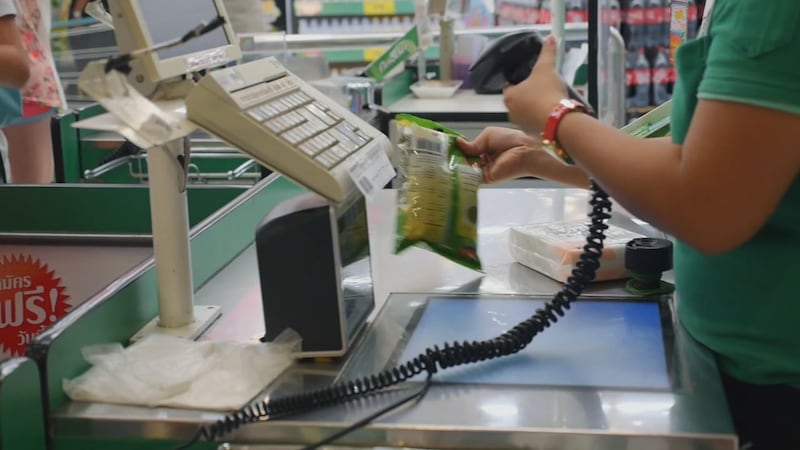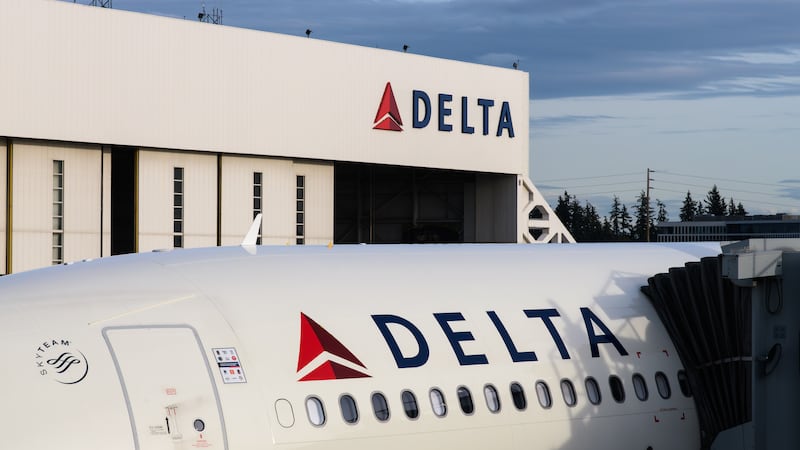ORLANDO, Fla. — Ellis White walked slowly to his front gate, holding back a dog that zealously guarded the back side of fence. He spoke softly, but confidently, not taking much time to think behind a face aged by years of stress holding a family together on the west side of Orlando.
>>> STREAM CHANNEL 9 EYEWITNESS NEWS LIVE <<<
“Six to seven hours,” he said, looking down the street toward the bus stop. The place he walks to and from up to three times per week, committing half a day of his life just to get to one destination: the grocery store.
White and his neighbors live within one of Orlando’s food deserts -- an entire neighborhood close to the heart of the city but isolated from one of life’s basic needs.
The USDA has traditionally defined an urban food desert as an area located more than a mile from a supermarket or large grocery store and where more than 1 in 5 people live below the poverty line.
READ: Deputies searching for missing 5-year-old who wandered away from Orange County home
The west side of Orlando is one of Central Florida’s most obvious examples. The older neighborhood is dotted with boarded up buildings surrounded by major commercial corridors: I-4 to the east, Colonial Drive to the north, OBT to the west and Central Boulevard to the south.
Here, transportation is a lifeline. After walking to his bus stop, White rides the route 19 stops down OBT to a Save-A-Lot more than 3 miles away. It’s twice the distance of his closest grocery store – the Publix by Lake Eola – that isn’t as accessible because no direct bus connects his house to that area. It’s also more expensive.
READ: Virginia Walmart shooting: 6 people killed identified by Chesapeake police
White said he can carry up to eight bags per trip, but he usually needs two or three times that amount to feed his family.
“Sometimes we even take the shopping cart with us and just walk,” he said.
Mapping the deserts
WFTV spent six months mapping every potential food desert in the metro region to help bring awareness to the issue of food access as access gets more difficult for families battling inflation. To do this, the team recorded every large grocery store and supermarket in the metro region as well as known future locations. A 1-mile radius was drawn around each, and the gaps in between were hand-drawn into a separate map.
Since block-by-block data about poverty levels isn’t available, the team examined the closest thing that was: how much of an elementary school’s population was considered “economically disadvantaged.”
Often, the areas with the highest numbers of disadvantaged students, and often the entire student body, coincided with the areas the team mapped. In addition to the west side of Orlando, swaths of Hiawassee, Azalea Park and Kissimmee qualified, along with sections of Eatonville, Pine Castle, Taft and Pine Hills.
READ: Healthcare organizations call for federal emergency declaration in response to RSV, flu surge
Not everyone inside these areas is impacted. Some have cars and steady incomes. While the team was careful to eliminate areas of obvious wealth, there was no way to tell which households in middle-class neighborhoods and apartment complexes were financially stable and which weren’t.
“You could literally drive through one, especially in Orlando, and not realize that you’ve gone through a food desert, and be in another neighborhood that may very well have access to healthy food,” Second Harvest Food Bank CEO Derrick Chubbs said.
Food deserts cut deeper than hauling bags back from a grocery store. Grocery stores themselves have been known to charge higher prices due to the lack of competition, and people within food deserts turn more to convenience stores, which mark up the prices of food and are often less nutritious.
That can lead to health problems among children and other issues for families that last generations. Chubbs said food deserts frequently don’t have banks or health clinics along with the dearth of grocery stores.
In turn, the cost of a food desert gets spread to the rest of the community.
“In some of the programs that we’re associated with now … we see fewer cases of diabetes, fewer cases of high blood pressure and those types of health care issues that ultimately drive up the cost of our health care system, which ultimately drives up the cost for us,” Chubbs said. “Here, we think food is medicine.”
There are many reasons why a food desert can be created. A section of Pine Hills, for example, became one when a Winn Dixie closed in 2019. A staff member for the district’s commissioner said the building was outdated and too big to operate. Despite the community’s reliance on the store – the staff member noted many of its customers walked -- continuing on was not feasible for an industry with tiny profit margins.
The building is now operating as a gym.
Tough problem to solve
The Taft and Pine Castle area didn’t make the cut for the USDA’s most recent food desert map because not enough people fell below the poverty line in 2019, but the communities might when the agency revisits the topic.
Almost every child in nearby schools is considered economically disadvantaged. Some people don’t own cars and rates of homelessness are high, according to officials. Some are well off, but there are visible differences between those and less fortunate neighbors.
Commissioner Mayra Uribe knows the area well, having grown up in Pine Castle. Taft recently entered her district when the lines were redrawn. She said food security was an immediate need.
READ: Six airlines required to pay $600+ in delayed refunds after facing federal fines
“We’re surrounded by industrial,” she said, pointing out Taft’s unique situation while standing next to the community’s central baseball field. “This isn’t a high growth area. So usually, when you have a high growth area, the new trend is mixing commercial and residential because you want to kind of create these inclusive communities. We don’t have that ability here.”
Uribe said grocery stores had closed in that area, making the issue worse. However, the county wasn’t getting applications for new ones – just restaurants, which are nice to have and make an area more attractive, but not very helpful.
In order to attract the type of development the area needed, she said more density was key – though not something the government could just force unless it funded and coordinated its own project.
READ: ‘Come on meow’: TSA officers find cat packed in luggage
At the end of the day, she and others said solutions were out of the county’s hands. She has approached nonprofits about starting more community gardens, but that’s only a small step toward a permanent solution.
“We’re so focused on housing right now because we don’t have enough housing. It’s worrisome,” she said. “It’s worrisome for what that future looks like.”
The west side of Orlando is the case study for how a food desert can be ended. While White’s neighborhood is set to remain without a shop nearby, most of the Parramore community will exit food desert status when a Presidente Supermarket opens on Gore Street.
READ: Florida deputies tell corny Thanksgiving jokes on TikTok
Once it does, White’s commute will be cut from 19 stops to 9, potentially saving him hours every week – and helping him avoid his runs to the local convenience store that eat away at his paycheck too.
“Lots of things we could do (with that extra time),” he said.
Click here to download the free WFTV news and weather apps, click here to download the WFTV Now app for your smart TV and click here to stream Channel 9 Eyewitness News live.
©2022 Cox Media Group








